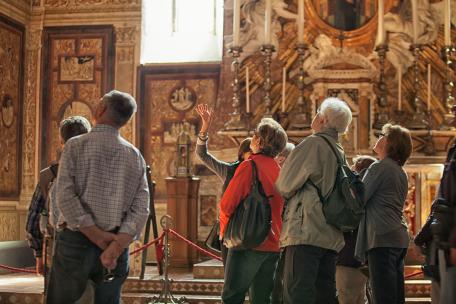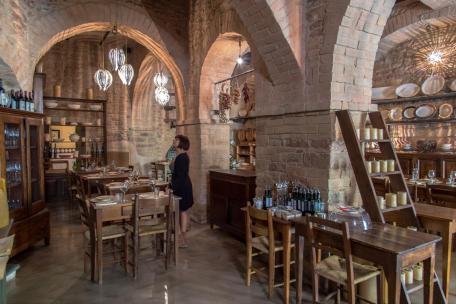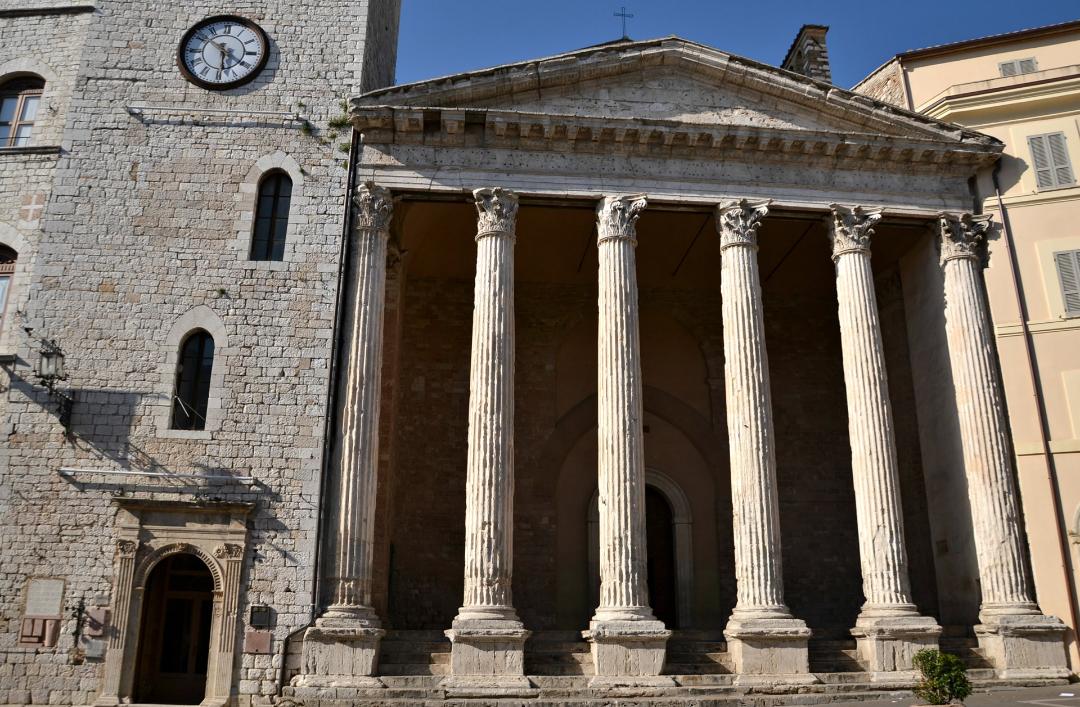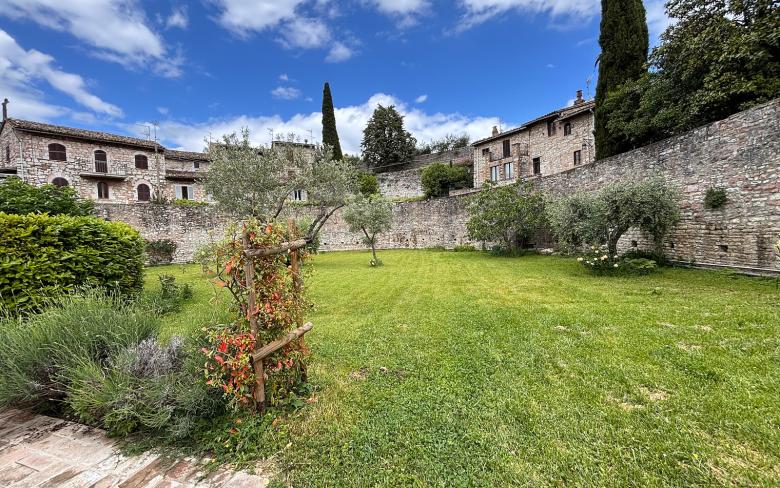During the 13th century, it was taken over by the Comune, which divided the structure into two floors, assigning the lower floor for use a prison and the one above as a Council hall.
The current appearance of the interior dates back to the 17th-18th centuries; in 1634 the church, which has been called Santa Maria sopra Minerva since 1539, was raised and lengthened, following designs by Giacomo Giorgetti.
The vault was entirely frescoed mid-18 th century by Francesco Appiani with the Glory of Saint Philip and the Cardinal and Theological virtues.
The two side altars, the choir and the back choir are from the same period, designed by Pietro Carattoli. The altar on the right is decorated with a painting of the Death of Saint Andrew of Avellino by Anton Maria Garbi whilst the one on the left, is the Death of Saint Joseph painted by Martin Knoeller. These artists also worked on other paintings, which today are found in the sacristy.
The high altar is decorated by exquisite seventeenth-century stuccos.
Recently restoration works have been carried out which brought to light some ruins from Roman times including the ancient temple floor and a solid support wall.


































